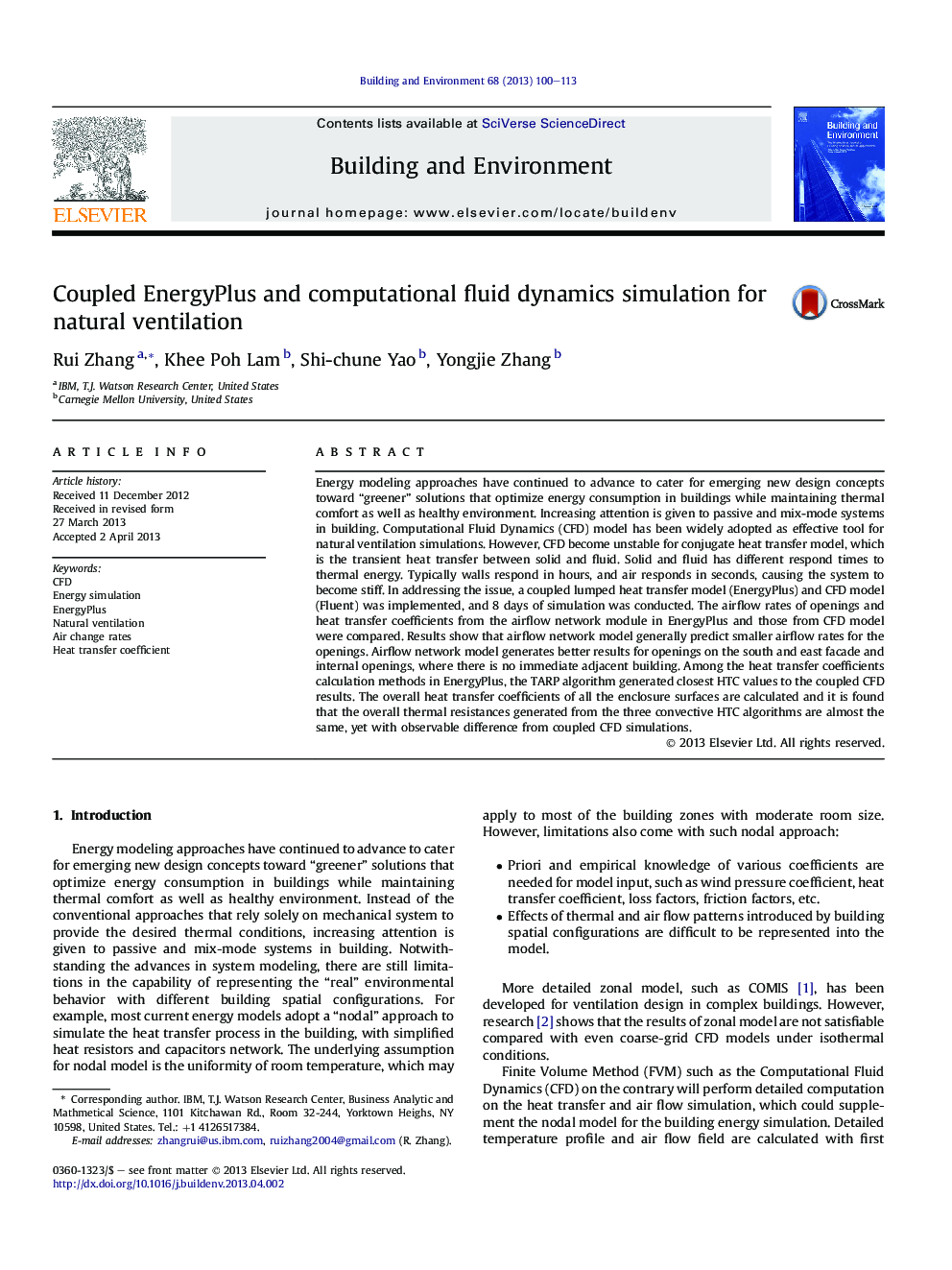| Article ID | Journal | Published Year | Pages | File Type |
|---|---|---|---|---|
| 248265 | Building and Environment | 2013 | 14 Pages |
•Implemented a coupling platform between CFD and nodal model.•Application on real project, with big dimensional scale.•Difference of heat transfer coefficients and airflow rates between coupled and nodal model.
Energy modeling approaches have continued to advance to cater for emerging new design concepts toward “greener” solutions that optimize energy consumption in buildings while maintaining thermal comfort as well as healthy environment. Increasing attention is given to passive and mix-mode systems in building. Computational Fluid Dynamics (CFD) model has been widely adopted as effective tool for natural ventilation simulations. However, CFD become unstable for conjugate heat transfer model, which is the transient heat transfer between solid and fluid. Solid and fluid has different respond times to thermal energy. Typically walls respond in hours, and air responds in seconds, causing the system to become stiff. In addressing the issue, a coupled lumped heat transfer model (EnergyPlus) and CFD model (Fluent) was implemented, and 8 days of simulation was conducted. The airflow rates of openings and heat transfer coefficients from the airflow network module in EnergyPlus and those from CFD model were compared. Results show that airflow network model generally predict smaller airflow rates for the openings. Airflow network model generates better results for openings on the south and east facade and internal openings, where there is no immediate adjacent building. Among the heat transfer coefficients calculation methods in EnergyPlus, the TARP algorithm generated closest HTC values to the coupled CFD results. The overall heat transfer coefficients of all the enclosure surfaces are calculated and it is found that the overall thermal resistances generated from the three convective HTC algorithms are almost the same, yet with observable difference from coupled CFD simulations.
